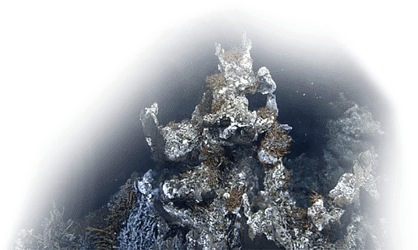You can’t control the weather - but you can still get plenty done before it closes in!
That was the experience of the 2025 #ONCabyss spring expedition, originally scheduled to conduct maintenance on Ocean Networks Canada’s (ONC’s) two major cabled observatories (VENUS and NEPTUNE) from March 18 to 27. However, with rough seas and three metre swells offshore, the mission was cut short, and concluded on March 24.
During this expedition, ONC and Canpac Marine Services, aboard the M/V Canpac Valour, successfully completed several research tasks and maintained the Victoria Experimental Network Under the Sea (VENUS) observatory in the Salish Sea.
Map of ONC's southern British Columbia ocean observing infrastructure including NEPTUNE and VENUS.
ONC and expedition partner Canpac Marine completed several maintenance and research tasks. From recovering a buried power node to conducting sensor benchmarking, the team showcased their expertise in ocean science and engineering.
Source: Windy.com
Keeping the observatories running
Maintaining seafloor scientific equipment presents unique challenges. Equipment must endure incredible pressures and constant exposure to corrosive seawater. To ensure ONC continues to deliver high-quality and continuous ocean data, sensors are cleaned or replaced regularly.
Saanich Inlet instrument platform being deployed using the ROV Mantis.
Sometimes, entire instrument platforms are recovered, serviced, and redeployed — like the Saanich Inlet instrument platform.
Did you know Saanich Inlet is a seasonally anoxic fjord? A physical barrier at the mouth of the inlet—a sill—restricts deep water renewal. This, in combination with dense phytoplankton blooms drives deep water deoxygenation in the inlet.
Find data from the Saanich Inlet instrument platform on our Oceans 3.0, ONC’s data management platform.
State of the Ocean plot from the Saanich Inlet illustrating oxygen, temperature, and salinity concentration over time.
Recovery of the Delta Dynamics Lab mini-node
The Delta Dynamics Lab mini-node was successfully recovered during the expedition—though not without its challenges. When the at-sea team located the mini-node, they discovered it was buried in sediment, requiring two dedicated dives to retrieve it.
The Delta Dynamics Lab mini-node recovery.
This mini-node provided power to the two-tonne Delta Dynamics Lab platform, which was recovered in 2024, marking the end of its 16 years of geo-hazard investigation in the Fraser River Delta.
Investigating seafloor pockmarks
Pockmarks are crater-like depressions in the seafloor commonly created by escaping fluids or gases from beneath the seafloor.
To better understand how and why pockmarks are formed, researchers from Natural Resources Canada (NRCan) had deployed a mooring during the previous #ONCabyss spring expedition in March 2024. It was equipped with scientific instruments to measure salinity (using an RBR Conductivity, Temperature, and Depth instrument), water and sediment movements (using a Teledyne-RDI Acoustic Doppler Current Meter) and gas escape (using an Ocean Instruments Soundtrap hydrophone).
ONC and Canpac recovered the NRCan mooring, which will allow researchers to download and process the data. Remotely-operated vehicle (ROV) Mantis also surveyed a series of pockmarks near the Fraser Delta to further this investigation.
NRCan research scientist Gwyn Lintern says scientists have known about the pockmarks for decades but many unanswered questions remain.
“These Fraser Delta pockmarks, in particular, form along chains of very straight lines. This indicates to us that there is a linear structure causing them, the most obvious which would be a fault, which is something we are actively investigating here at NRCan.”
Lintern says groundwater escaping from beneath Metro Vancouver into the ocean sediment is also under investigation.
“We will use the year of data from the mooring to determine under what conditions the pockmarks are actively growing, whether just slowly all the time, or during sporadic events,” he says.
Benchmarking for accurate data
One of the top science priorities of this expedition was to measure water properties for reference checks and site characterization. By comparing water property measurements from physical samples with real-time sensor data, researchers can validate both autonomous and cabled instrumentation. These reference checks are essential for maintaining high-quality ocean observations.
The at-sea team collected water samples next to ONC’s CTD sensors via a Niskin bottle mounted on ROV Mantis. CTD rosette casts and bottle sampling were used at other sites.
Thank you to our partner, Canpac Marine Services, for providing a safe at-sea home for the ONC team to carry out their mission!
Looking ahead
Work scheduled for the open coastal waters of the North East Pacific Time-series Undersea Networked Experiments (NEPTUNE) observatory, off the west coast of Vancouver Island, will be carried forward to the next ONCabyss expedition starting in May 2025.
Inside the control van aboard the M/V Canpac Valour.
